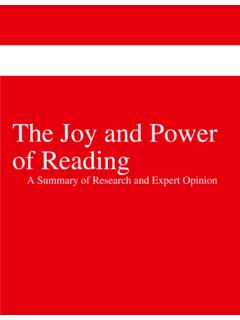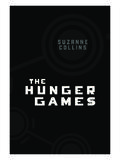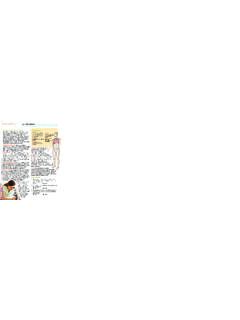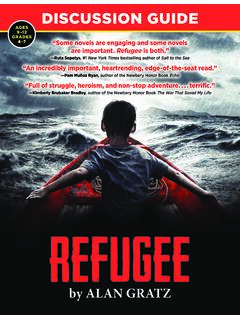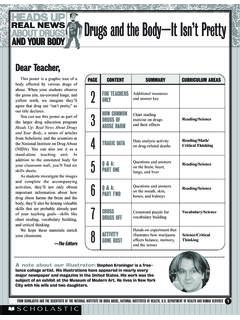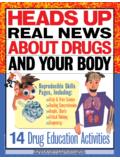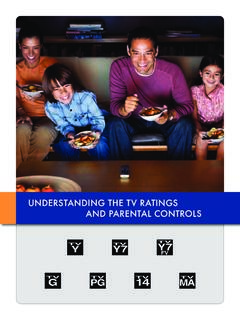Transcription of A Guide to Using Graphic Novels With Children and Teens
1 Publishing Graphic Novels for kids since 2005 Graphic NOVELSA Guide TO USINGWITH Children AND TEENSPOSTER INSIDE!1 Graphic Novels ARE EVERYWHERE! No longer an underground movement appealing to a small following of enthusiasts, Graphic Novels have emerged as a growing segment of book publishing, and have become accepted by librarians and educators as mainstream literature for Children and young adults literature that powerfully motivates kids to read. Are Graphic Novels for you? Should you be taking a more serious look at this format? How might Graphic Novels fit into your library collection, your curriculum, and your classroom? Want to know more? If so, this Guide is for 2014 Jimmy GownleyTHE DUMBEST IDEA EVER!fromby Jimmy Gownley2 What are Graphic Novels ? In this context, the word Graphic does not mean adult or explicit. Graphic Novels are books written and illustrated in the style of a comic book. The term Graphic novel is generally used to describe any book in a comic format that resembles a novel in length and narrative development.
2 Graphic Novels are a subgenre of comics, which is a word you may also hear people use when referring to this style of book. Graphic Novels can be any genre, and tell any kind of story, just like their prose counterparts. The format is what makes the story a Graphic novel , and usually includes text, images, word balloons, sound effects, and basic way of storytelling has been used in various forms for centuries early cave drawings, hieroglyphics, and medieval tapestries like the famous Bayeux Tapestry can be thought of as stories told in Graphic Novels suitable for the young, and how do I evaluate them?Some parents, educators, and librarians may associate the term Graphic novel with content that is not suitable for young readers. Today there is a wide range of titles and, though not all Graphic Novels are intended for Children , there are more titles published expressly for kids coming out every and roundups of new Graphic Novels appear regularly in review journals.
3 By reading these reviews, seeking the advice of trusted colleagues and vendors, and previewing materials prior to circulation, you can build a collection that is suited to your do Graphic Novels promote literacy?MotivationGraphic Novels powerfully attract and motivate kids to read. Many librarians have built up Graphic novel collections and have seen circulation figures soar. School librarians and educators have reported outstanding success getting kids to read with Graphic Novels , citing particularly their popularity with discerning readers. At the same time, Graphic Novels with rich, complex plots and narrative structures can also be satisfying to advanced readers. Providing young people of all abilities with diverse reading materials, including Graphic Novels , can help them become lifelong readers. Discerning readersGraphic Novels can be a way in for students who are difficult to reach through traditional texts. Even those deemed poor readers willingly and enthusiastically gravitate toward these books.
4 Readers who are not interested in reading or who, despite being capable of reading, prefer gaming or watching media, can be pulled into a story by the visual elements of Graphic Novels . 3 Benefits to struggling readers, special-needs students, and English-language learnersGraphic Novels can dramatically help improve reading development for students struggling with language acquisition for various reasons. For example, special-needs students may find that the illustrations provide contextual clues to the meaning of the written narrative. Graphic Novels can also provide autistic students with clues to emotional context they might miss when reading traditional text. English-language learners may be more motivated by Graphic Novels , which can help them acquire new vocabulary and increase English are Graphic Novels real books ? Are they literature ? Do they count as reading ?Overcoming prejudicesSome parents and educators may feel that Graphic Novels are not the type of reading material that will help young people grow as readers.
5 They may cling to the belief that Graphic Novels are somehow a bad influence that undermines real reading or they may dismiss Graphic Novels as inferior literature, or as not real books. At best, they may regard them as something to be tolerated as a means of motivating the most reluctant readers, who, they hope, will eventually move on to more quality literature. Acceptance by librarians and educatorsGraphic Novels have come to be accepted by librarians and educators as a method of storytelling on a par with Novels , picture books, movies, or audiobooks. The American Library Association has recognized this in establishing its annual list of Great Graphic Novels for Teens , and in 2011 they added the annually updated Core Collection of Graphic Novels for young readers in grades K through 8. In 2014, the American Library Association showed their continued support of the format in offering the Will Eisner Graphic novel Grants for Libraries, two grants awarded annually to support libraries and librarians in building the best collections and presenting educational programming on the format for their 2015, El Deafo, Cece Bell s Graphic memoir about her experiences as a child with hearing loss, won an Eisner Award.
6 The memoir was also selected as a Newbery Honor book for its contribution to Children s literature. In 2016, Victoria Jamieson s bestselling Graphic novel Roller Girl was named a Newbery Honor 2014 Mike MaihackCLEOPATRA IN SPACE fromby Mike Sec1:448/6/09 3:01:27 Sec1:448/6/09 3:01:27 Sec1:448/6/09 3:01:27 Sec1:448/6/09 3:01:27 PM4 Critical reading skill developmentThe notion that Graphic Novels are too simplistic to be regarded as serious reading is outdated. The excellent Graphic Novels available today are linguistically appropriate reading material demanding the same skills that are needed to understand traditional works of prose fiction. Often they actually contain more advanced vocabulary than traditional books at the same age/grade/interest level. They require readers to be actively engaged in the process of decoding and comprehending a range of literary devices, including narrative structures, metaphor and symbolism, point of view, the use of puns and alliteration, intertextuality, and inference.
7 Reading Graphic Novels can help students develop the critical skills necessary to read more challenging works, including the addition to the connections to analyzing text, Graphic Novels inspire readers to understand and interpret information differently from how readers process prose. In a world where young people are growing up navigating narratives presented through websites, video games, television, films, and increasingly interactive media, learning and maintaining visual literacy is a necessary skill. Today s world of stories contains far more than just prose, and readers who are skilled at understanding and being critical of multiple formats will Graphic Novels have a place in the curriculum?Many educators have reported great success when they have integrated Graphic Novels into their curriculum, especially in the areas of English, science, social studies, and art. Teachers are discovering that Graphic Novels just like traditional forms of literature can be useful tools for helping students critically examine aspects of history, science, literature, and art.
8 Graphic Novels can be integral parts to implementing any curriculum standards, including the Common Core, Next Generation Standards, and state are the literary themes in Graphic Novels ? Graphic Novels contain all of the same literary themes used in classic literature. Some, like Jeff Smith s BONE, are works of epic adventure with many parallels to mythology, such as the quests in The Iliad and The Odyssey. Other classic archetypes in BONE and other Graphic Novels include the reluctant hero, the unknown destiny, and the mentor-wizard figure. Using Graphic Novels along with traditional works of literature can motivate students who may have had little interest in studying literature and history. Refer to the Graphic Novels Themes chart in this Guide to identify which topics, genres, and themes are present in various books and series and determine which is right for your needs. Art 2010 Raina TelgemeierSMILE fromby Raina Telgemeier5 What are the benefits of studying Graphic Novels as a format?
9 A unique art formNovels speak to us usually in a linear written narrative; picture books tell a story with text accompanied by illustrations; film does so with moving images and dialogue; and poetry can communicate on levels that no other storytelling Novels combine all these elements in their own unique way. They are like prose in that they are in a written printed format, but they are also like film in that they tell a story through dialogue, and through visual images that give the impression of movement. Graphic Novels do not and aren t intended to replace other kinds of reading it s not an either/or choice. Reading all kinds of formats encourages readers to think critically about how stories work across the different from the unique format of Graphic novelsStudents can compare the different experiences of receiving information through written narrative, versus receiving it visually without words. They can analyze how information about character is derived from facial and bodily expressions, and about meaning and foreshadowing from the pictures composition and viewpoint.
10 You can invite students to find examples of where the viewpoint of the picture is critical to the reader s experience of the story. Students can also discuss how in Graphic Novels , as in movies, readers can often deduce what happened but was not explicitly stated in the interval between one image and the next. Students hopefully know what it s like to be so engrossed in a riveting novel that they feel as if they re watching a movie of the story in their imagination. Graphic Novels are literature that is actually in a cinematic format. You can discuss with students the similarities and differences between these Some Graphic Novels can be compared to works of poetry in the way they convey intangible feelings through allusion rather than direct description. Creative writingGraphic Novels can be a springboard to many creative writing projects. Students can write their own alternative endings, or accounts of what happened before or after the story.

